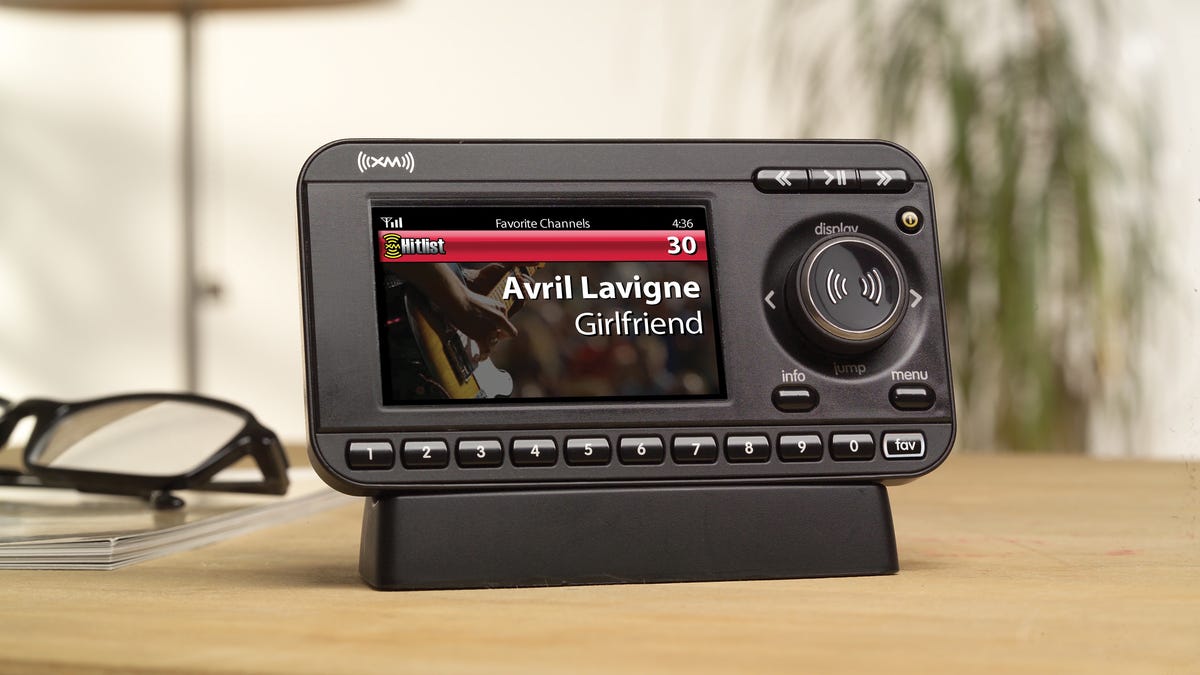Hands-on: XM XpressRC
If you want to get in on the satellite radio action and you don't mind spending $170 to do so, the XpressRC is a great place to start.

Generally speaking, my love for satellite radio is nonexistent. Sorry to say, I just don't see a reason to spend that kind of money ($12 per month) to listen to a host of shows that can usually be heard on the radio and music that copies what we hear on local radio for free. Now for some, the prospect of missing Howard Stern may be too much to handle, so they go out and pay for Sirius. But XM doesn't have a show like that and more often than not, you'll find yourself working your way through dreck just to get to MLB or other exclusive offerings.
But alas, this hands-on isn't about XM programming as much as it's about the XpressRC. And for all of the faults I find in XM programming, they can't compare to just how nice the XpressRC is.
Design
For those of us who have gone through the pains of using mobile satellite products, the XpressRC is a breath of fresh air. Unlike the Sportster from Sirius, the XpressRC features a full-color display that not only jumps out at you with its beauty, but can be easily read and understood while driving, using the device from across the room, or simply navigating your way through the menu.
The XpressRC comes with 10 preset buttons so you can save all of your favorite shows and the typical XM knob helps you navigate your way around the menu. The biggest issue I had with the device's design, though, is that same knob. Unfortunately, the knob is not as useful as it could have been. I understand the reason for having one central component to control menu options, display and the rest, but it simply doesn't work as well as I'd hoped.
One other slight issue with the device is its small power button that, while it adds some flare to a stylish design, is too small and is difficult to press if you're driving. The biggest issue with the power button is that XM decided to place it just beyond the knob, but not far enough away to easily sneak a thumb in there to start using the player.
Features
Much like other devices, the XpressRC is portable and can be used in a car, with a Delphi Sound System or with an included dock that allows you to connect it to any sound device. And, as is customary with these devices, the XpressRC does come with a satellite antenna that must have full line of sight to the sky.
What sets the XpressRC apart from its competition is the decision by XM (and Delphi--the creator of the device) to allow you to pause, play and rewind up to sixty minutes of programming. At first, I was skeptical as to how well it would work, but after just a few minutes of using the device, I quickly found myself rewinding to hear a missed lyric or going back an hour to have a friend listen to some funny jokes I heard. Even better, when I left the room, I hit pause and didn't miss a beat. More than anything else, it's this feature that should sell the device and will definitely come in handy if you're an XM fan.
Another nice feature on the XpressRC is the ability to save your 10 favorite songs with the help of a solution called SongSaver. As soon as you hear something you like, simply save it to SongSaver and you can replay as often as you'd like. Would it have been nice to save 100 songs? Sure. But I found 10 to be quite enough on a short trip.
GameSelect and TuneSelect also come in handy when you're using the XpressRC. The former allows you to set the team's game you'd like to listen to (Go Yankees!) and the latter alerts you when your selected artist or song is on an XM channel. And although the alerts pop up at inopportune times and they don't always work as well as you'd like, they work well enough to justify using them.
Performance
Overall, the XpressRC does a fine job of handling audio and pumping out nice sound. It would have been nice if the menu system, although useful and effective, had been optimized for more thorough use. That said, I found the menu navigation on the right while showing what's currently playing on the left was a nice addition that shouldn't be overlooked when you make your decision at the store.
Bottom Line
Generally speaking, I usually don't endorse satellite radio as an alternative to podcasts or terrestrial radio. But if you definitely want to get in on the satellite game and you don't mind spending $170 for a device to do it, the XpressRC is the way to go.
Check back each Friday on The Digital Home as Don performs a hands-on evaluation of some of the hottest home products around. Next week: TBD. If you want to see prior Hands-on Friday articles from Don, click here.

